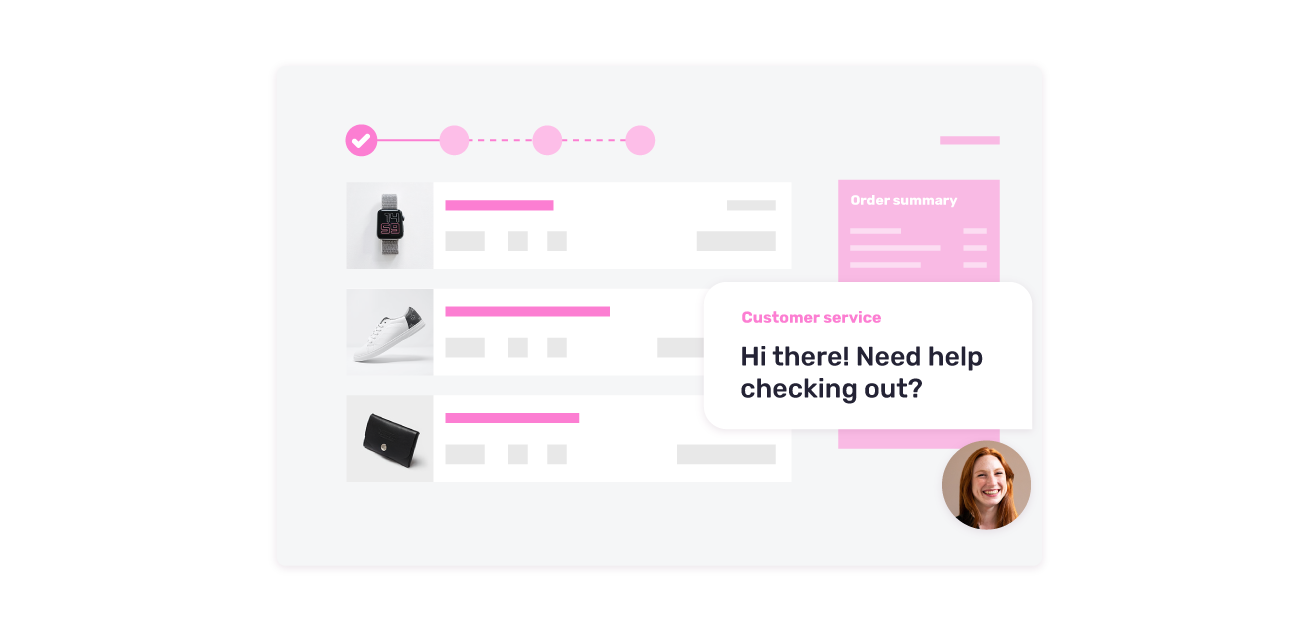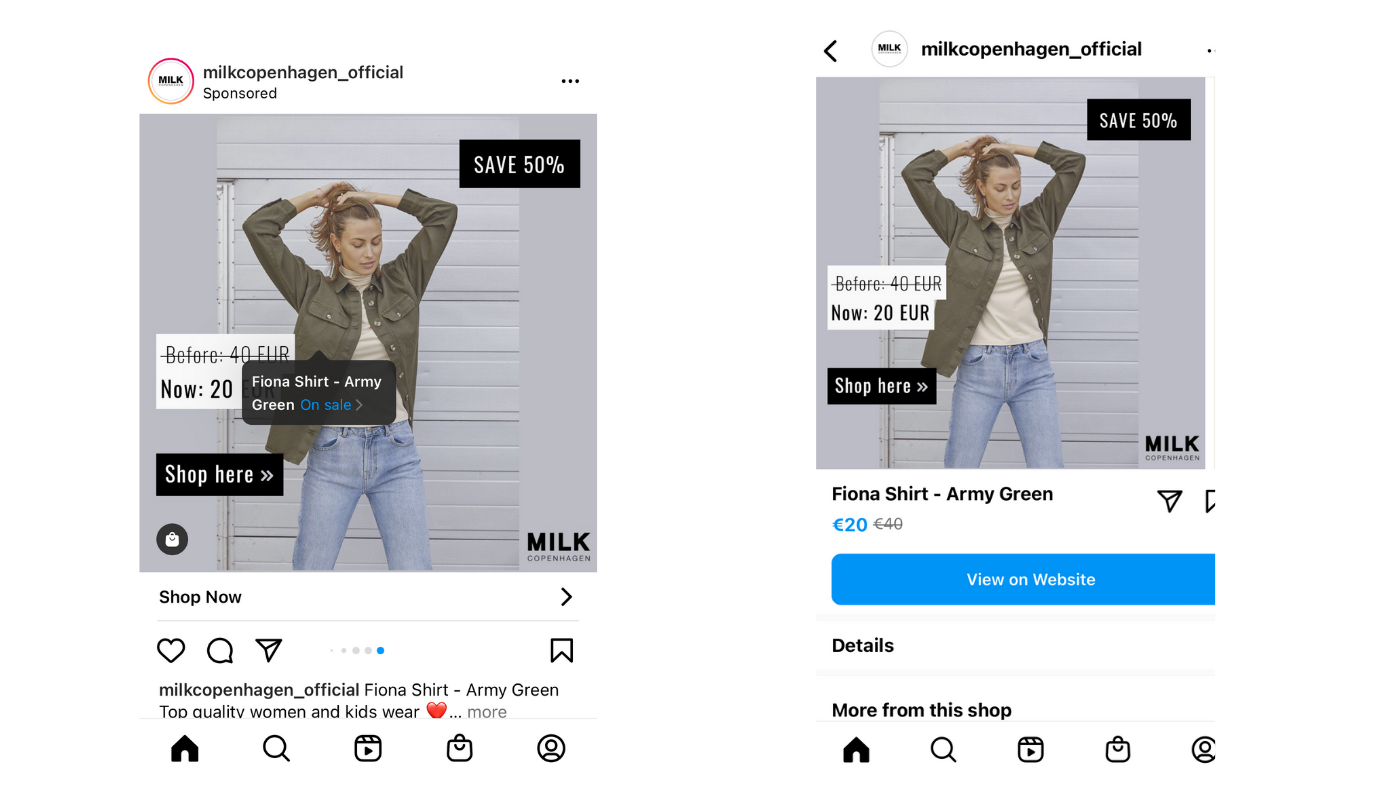Props to the eCommerce marketers, we know how hard it is to stand out in a crowded industry.
It may seem like you’ve tried loads of different strategies to increase your monthly sales, but don’t throw in the towel and settle for average just yet.
With our practical eCommerce marketing tips, you can accelerate your sales and grow a loyal customer base:
Best eCommerce marketing tips for driving sales
1. Engage through live chat
2. Embrace dynamic shopping technology
3. Find the magic in email marketing
4. Use navigation bots to help customers find what they want
5. Provide content that is useful for your customers
6. Take advantage of user-generated content
7. Optimise for mobile
8. Test out influencer marketing strategies
Personalisation is the key to driving eCommerce sales

What is eCommerce marketing?
eCommerce marketing is the effort you put into promoting your products and services to past and future customers. Marketing for your eCommerce store can take several different forms, it mainly depends on your goals for your online shop.
Is your goal to drive traffic to your website, strengthen brand awareness, or sell a product directly?
Once you know your objective, then you can assess the most fitting eCommerce marketing strategy.
You can market on social media, your website, search engines or with email campaigns to attract visitors to your website and ultimately grow your sales.
Why do you need eCommerce marketing? Well, for starters it helps
- Drive traffic to your website
- Build up brand awareness
- Reignite interest from past customers
- Drive customer loyalty
How is eCommerce marketing different from other forms of marketing?
An eCommerce store has to think a little differently than a brick-and-mortar store.
In a traditional store, with face-to-face interactions, customers can ask questions and feel and try on products. Most of the time, when a store’s marketing has worked to attract the customer into the store, the products and services available within the store sell the rest of the experience.
Online stores, however, do not offer the same luxury. So, for eCommerce, your marketing efforts need to be just as strong on your website as they are on other channels. With the right marketing tools and tricks, you can drive more sales on your website and delight customers.
8 eCommerce marketing tips to drive more sales
To give you some insight on how to perk up your e-commerce marketing you can use these channels to better connect with your customers.
Tip 1. Engage through live chat
Live chat is a multi-purpose tool that can assist in accelerating your sales. Here’s what live chat does for your eCommerce website
Live chat saves time for you and your customers.
73% that the most important aspect of customer service is that the company values their time.
Live chat is an engaging tool that your customers can ask questions about your products without having to actually leave the page to email, or even to call.

Real-time answers speed up the process as not to lose the purchasing intent.
Saving your company time as well while your representatives can assist several customers at the same time.
Live chat provides valuable insights about customers
With live chat, you receive valuable data that can be used to your advantage. You will know where your customer is in their buying journey based on the pages they are visiting and the products they add to their shopping cart.
Using this information you can help cross-sell and up-sell your products that are most relatable to your customers.
Tip 2. Embrace dynamic shopping technology
An innovative way to try to sell more products is to adapt the new technologies and applications that are available.
For example, social media apps have gone through various upgrades to optimise shopping experiences.
Social media shopping channels like Facebook and Instagram let you choose the items you want to feature and sync your entire inventory.

In Facebook Shops, you are also able to connect with your customers through WhatsApp, or direct messages to answer questions, and offer support to your customers.
This is a great way to boost your sales by connecting with your customers that are interested in your brand and have a high purchasing intent through the platforms they use most.
Another rising technology online retailers can lean into is live video shopping.
Live video shopping delivers the in-person shopping experience to an online platform.
As a seller, you can showcase your products on video, while customers have the chance to purchase them, in real-time.
Giosg encourages online businesses to try live shopping with one-to-one calls to promote a totally personalised experience.

A service like this on your website shows your online shoppers that you are serious about providing a memorable online shopping experience.
In the next stage, you can also use social media analytics tools and gather insights into how your customers interact with your business and what can be improved.
Tip 3. Find the magic in email marketing
If you haven’t taken advantage of email marketing yet, where have you been?
All jokes aside, this is an easy and low-cost way to keep in contact with your customers. Email marketing can support a variety of business aspects.
Grabbing your customers' email addresses by offering discounts or deals is a nice way to build up your subscriber list. Organically collecting email subscribers is much more effective than buying a subscriber list. In any case, you will always need to verify email addresses before sending an email.

Emails let you target certain segments of your customer base. Imagine you have a promotion going on in one city but not in the other, you can email only those certain customers who live in that area.
Also, another plus is that email marketing can help drive sales.
Let's say customers are buying a certain product repeatedly, you can send emails notifying them that you have similar products that can benefit them as well. This strategy provides an easy way to up-sell and cross-sell your products.
Email marketing is also easily measurable, most platforms allow you to track click-through rates and conversions. This is an easy way for you to know what types of emails work well with your customers and influence them to buy.
Tip 4. Use navigation bots to help customers find what they want
Chatbots allow you to simplify and organise your website's navigation. Trying to find relevant content frequently requires searching through multiple drop-downs and pages.
To reduce this tedious search time, a chatbot offers direct assistance to guide the customer to their desired page with simple prompts.
Chatbots can make your customers' journeys easier. During the conversation, they can make product recommendations that will make the entire purchasing process easier for the qualified lead.
The most beneficial chatbots are purposely designed to provide quick, friendly responses. Don’t underestimate the power of suggested content and products to customers.
Tip 5. Provide content that is useful for your customers
Content marketing offers you the chance to bring out your brand's personality and tell a story to both your potential and loyal customers.
Creating content allows you to demonstrate the purpose behind your products more deeply while building a more authentic connection with your customers.

When you educate and give reliable advice on topics that consumers are most interested in, you also create more recognition for your company.
Your customers might not know a certain product is available to solve their problem, but if they hear it for the first time through your video for example, in the future they will remember you.
Popular forms of content for eCommerce stores are:
- Blogs
- Videos
- Podcasts
- Guides
- Pop-ups
One interesting content trend that is growing in popularity is employee advocacy.
Repurposing employees’ reviews and ideas as videos or blogs for example is a thoughtful way to produce a new type of content.
Besides, who knows your products better than your employees? Plus, they probably have more followers than you think.
A study showed that consumers find employees more trustworthy than a spokesperson or marketing team.
Pro tip: A creative way to promote your fresh content is to offer it via interactive chatbots on your website.
Tip 6. Take advantage of user-generated content
In the current day, where customers are eager to praise your products online, user-generated content (UGC) has become a vital aspect of any business.
Consumers trust organic, user-generated content 92% more than traditional advertising, this is due to the fact that users are not paid for their feedback. So it's seen as honest and authentic.
The content created by your customers could be anything from social media posts to comments, reviews, and photographs.
One of the best examples of user-generated content, UGC, is from zappos.com.

When a customer clicks on a product, they will instantly see a collection of customer-submitted photos and reviews. For a retail company like Zappos, this is extremely important, because consumers love to see products in action and imagine themselves using them before buying.
Tip 7. Optimise for mobile
If you’re only adjusting your website as an afterthought to fit in a mobile device, it's time to come out of the cave and be mobile-first.
Mobile optimisation is making sure visitors shopping on mobile have an experience that is made for that device. The design quality and load times must be of high priority.
Did you know that 53% of customers will leave if the web page isn't loaded within 3 seconds!
Here are 3 ways you can optimise your website for your mobile customers. Make sure your website is:
- Scrollable- Create logical pathways so the most important information is easy to find.
- Clickable- Make sure the buttons are easy to click and responsive.
- Viewable- Make sure your site fits appropriately for the mobile screen so customers don’t need to scroll from side to side.
- Use a bulk image resizer - Large, high-resolution images can slow down your website's load time, especially on mobile devices. Using a tool like BeFunky's free photo editor to resize and optimize your images can help improve your site's performance and keep mobile customers engaged.
Tip 8. Test out influencer marketing strategies
Influencers..whether you love ‘em or hate ‘em. They are very popular and only growing stronger with a projected market size of $84.89 billion in 2028.
These creators have built mass followings on social media or blogs of their personal experiences with products and gained trust from their audience.
They have the power to persuade their followers to purchase decisions.
Being strategic and finding the right influencers can help build up your brand awareness amongst new audiences.
Collaborating with influencers on your campaigns with video unboxing or leading a live video shopping event, can have a tremendous impact on your sales. Partnering with an event staffing agency to help source and manage influencers can be a huge asset in creating successful campaigns.

Affiliate marketing is another way to get the most out of your influencer marketing strategy.
This type of marketing refers to the promotion of your products on influencers’ blogs, social media platforms or other websites.
When a visitor from the influencer’s platform clicks on their personalised link to your website and makes a purchase, the affiliate receives a small commission.
It is a low-risk way to broaden your reach quicker while only having to pay the affiliate once the sale is complete.
81% of brands use affiliate marketing because they’ve found that it works well as a beginner way to step into influencer marketing.
Personalisation is the key to driving eCommerce sales
All the above tips have one common theme…Personalisation.
Personalisation in eCommerce is important because it makes the buying experience feel unique to the customer.
The key to effective personalisation is to use the data you have collected in previous touch-points whether it be from past purchases, emails opened, live chat activity, or positive-response to campaigns.
Personalisation is a very powerful tool in increasing your sales. 59% of shoppers agree that some form of personalisation had a positive impact on their buying decision.
Need some help personalising your marketing strategies? Book a demo with us to see how to use interactive tools for your eCommerce shop.
